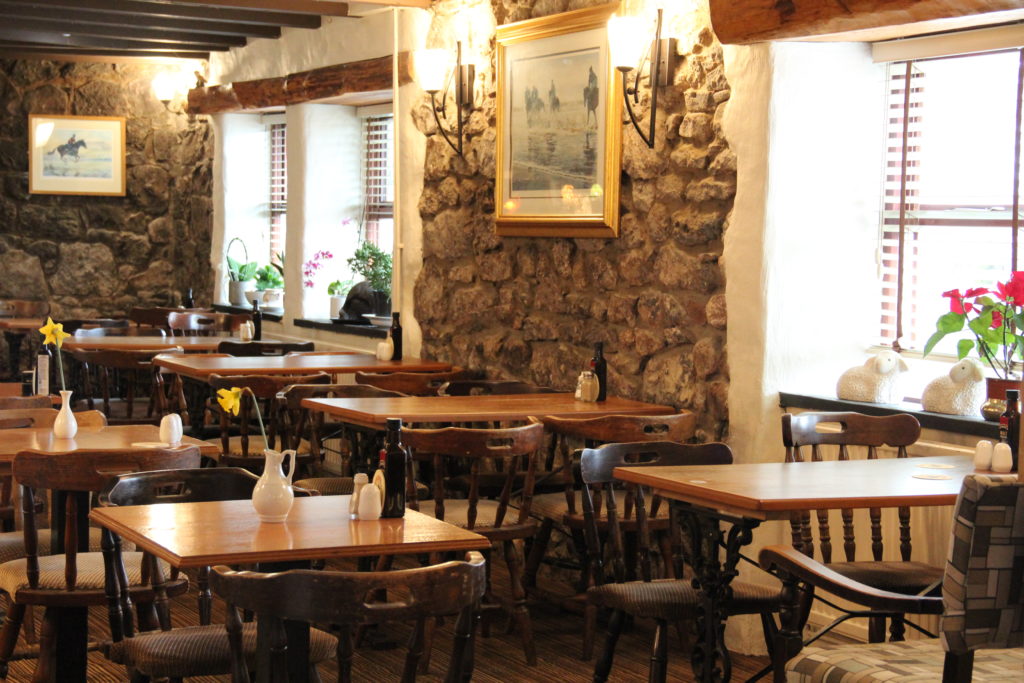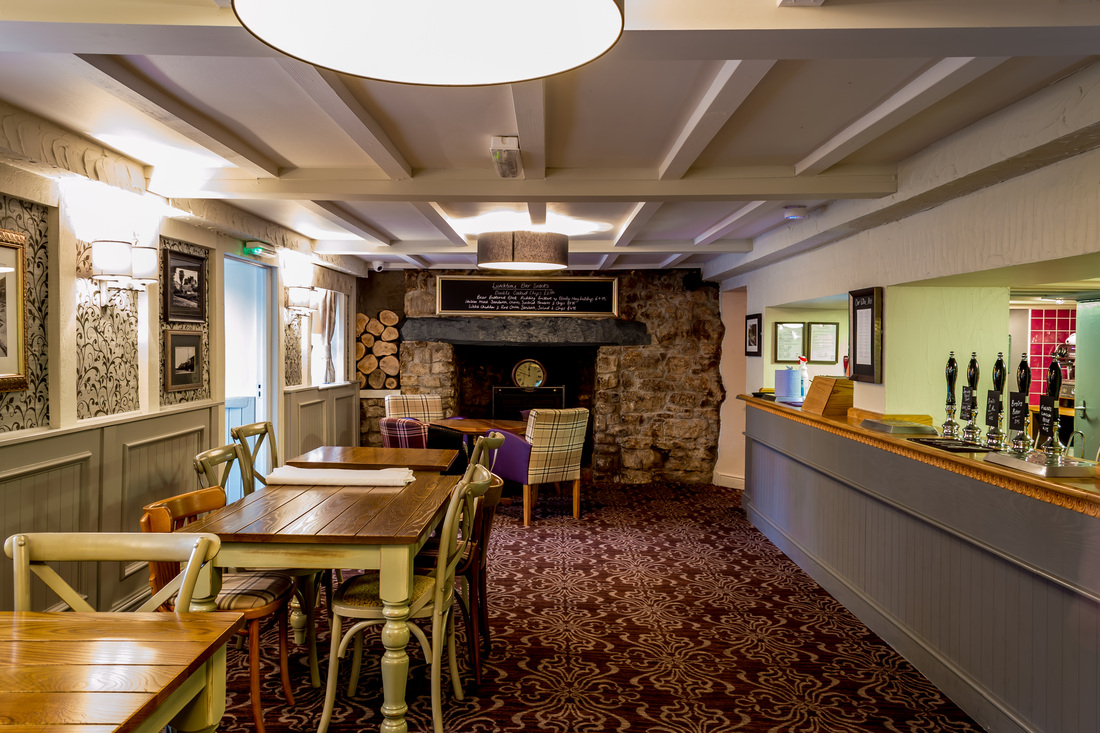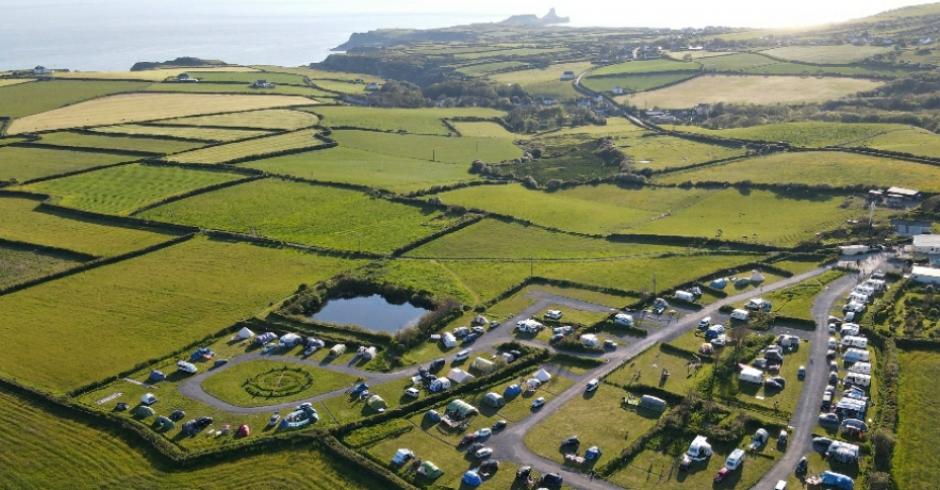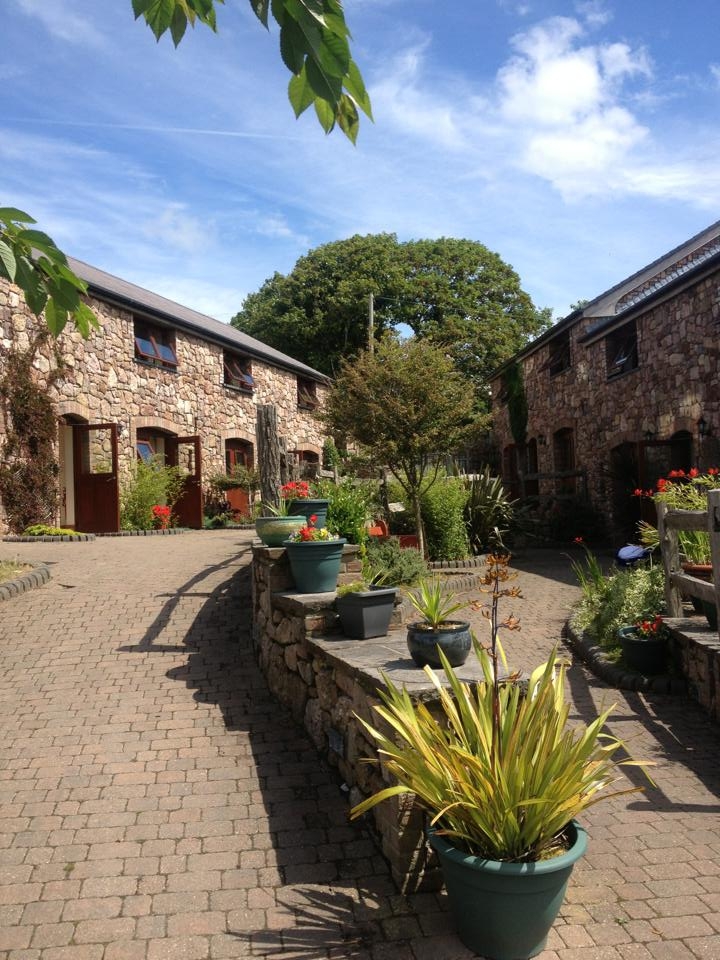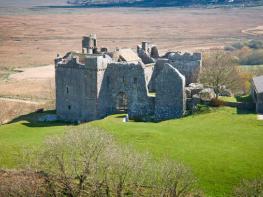Set in an unrivalled location alongside the safe sandy beach of Port Eynon on the Gower…
Port Eynon to Rhossili

A linear trek along a scenic stretch of the Gower coast, returning by bus.
6.5 miles (10.4kms)
About the walk
The stretch of coast from Port Eynon along to Rhossili marks the far southwestern extent of the Gower peninsula and includes one of the most iconic sights in Wales: Worms Head. The sandy beach of Port Eynon Bay, though far from large, somehow manages to encompass two villages – Horton and Port Eynon, from where this walk sets off. While less undulating than some of the coastal paths around South Wales, there are still enough dips and climbs in the middle section of this route to get the heart pumping as you pass a brace of Iron Age forts and Paviland Cave, once erroneously believed to be the last resting place of the bones of the Red Lady of Paviland. Journey’s end is at Rhossili, a tiny village popular with day-trippers, where refreshment awaits, along with a bus to take you back to Port Eynon at the end of the day.
In Victorian times, Port Eynon was a bustling place whose men worked in local quarries, fished for oyster or served as mariners. The place is a lot quieter now – the sandy beach now providing the main attraction. The 12thcentury church of St Cattwg is also worth a gander before you set off. Though ‘renovated’ by the Victorians in their habitually intrusive manner, they didn’t touch the Norman doorway and in the porch you can still see the stoup (for holding holy water), which is reputed to have been donated by a Spanish sea captain saved from drowning by local people.
A mile-long island spearing the Bristol Channel, Worms Head can be reached at low tide by crossing a rocky natural causeway. Forget any ideas you might have about the island looking like a worm, however. The name is a corruption of the Old English ‘wyrm’, meaning dragon. It was on the slopes below the fort on Worms Head that a young Dylan Thomas fell asleep, missed the tide and had to wait from dusk until midnight until the next one, fortified only by a bag of sandwiches and a book. He later recalled being terrified by the experience and he left as soon as the tide went out sufficiently for him to creep back over to the mainland. However, he clearly came to terms with the encounter because the Worms Head featured in Thomas’ short story Who Do You Wish Was With Us?
Walk directions
At low tide, walk on to the beach following ‘coast path’ waymarkers to the obvious ruins of the Salthouse on the point, where an information board gives plenty of interesting history on the area. If the tide’s high, follow a good track past the car park and through a gate to the Youth Hostel, which you keep to your left to continue on a caravan park drive to the ruins down on your left. From here, follow the sandy track along the coast until, in the centre of the rocky bay to your left, the path splits. Take the right-hand fork and climb up steeply taking the left fork when the path splits again past a quarry on your right to the monument on the hilltop.
Follow the cliff tops until the path drops down to a gate. Cross this and walk behind the rocky beach. Ignore the path off to the right half-way across the beach and when the path forks, keep left to another gate marked Overton Cliffs. Keep ahead to follow the path as it squeezes between impressive limestone cliffs and steep scree. You’ll hurdle a wonderful rocky terrace and drop beneath more formidable crags, many of which make for excellent rock climbing. The path sneaks between more rocky outcrops before heading down to a wall. Go through the gate, turn right and follow the path steeply upwards to meet a good path.
Turn left on to this and follow the wall. Continue to follow the coast path, until you reach the deeply cloven gorge of Foxhole Slade.
Keep ahead in the dip through a gate and climb steeply back up. This area is owned by the National Trust and to your left, but almost impossible to reach, is Paviland Cave. Continue along the wall and through another gate. After 100yds (91m), next to a wooden gate on the right, fork left and continue until you join the wall again and drop to a gate. Cross this and bear left to head back out on to the cliff top.
Here you’ll find the obvious earthworks of an Iron Age fort. A wall splits the ramparts; cross this through a gate and follow the coast around to a fence, which you then follow to the head of a huge hollow with no name on the OS map. Go behind this, bearing slightly right at the crossroads of paths by a stile (which you don’t cross) and continue along the line of the wall, which initially hugs the coast before heading back inland a little as it approaches Mew Slade. There are more ancient earthworks on Thurba Head, to your left. As the wall turns sharp right, keep straight ahead to a steep path that drops down somewhat awkwardly into Mew Slade.
From the bottom of the dip, vertigo sufferers would be best advised to continue along the coast path to avoid an extremely narrow path above a precipitous drop. Everyone else should turn left after the gate to follow a grassy path coastwards to the small cove, hidden behind rocky outcrops and covered almost completely by the sea at high tide. A narrow path heads west from the beach and contours around the steep hillside to rejoin the main coast path (and any vertigo sufferers) in an area of outstanding limestone scenery. Bear left on to the path here and follow it around to another dip. Keep high to round the head of the valley and then drop down, towards Tears Point. Head back up the grassy down towards the cliff tops, where you veer around to the right to follow them along. Continue around the coast passing above Worms Head and then swinging north at Kitchen Corner to rejoin the main, wellsurfaced track as you approach Rhossili village. Continue past the information centre and the main car park to the bus stop, on the left just before the church.
Additional information
Coast paths
Limestone cliffs and sheltered bays
Care around livestock and on steep cliffs
OS Explorer 164 Gower
Large car park in Port Eynon
Near the start in Port Eynon and at Rhossili
WALKING IN SAFETY
Read our tips to look after yourself and the environment when following this walk.
Find out more
Also in the area
About the area
Discover Swansea
There’s no getting away from it – when it comes to image, Swansea is a bit of a mixed bag. During its heyday in the 19th century, as king of the copper industry, it was known as ‘Copperopolis’. Dylan Thomas then called it an ‘ugly, lovely town’, but home-grown megastar Catherine Zeta-Jones raves about it and surveys have concluded it’s the best place to live in Britain. The good news is that regeneration is afoot. The dock area has been redeveloped into an opulent Maritime Quarter, where refurbished old buildings mingle with modern architecture, and the city is home to some appealing attractions.
When you tire of the city, head west along the Gower Peninsula, a designated Area of Outstanding Natural Beauty. The perfect holiday destination, it is the ideal place to surf, kite surf or boogie board, with stunning beaches and pretty inland areas. There are four National Nature Reserves and ample gardens, parks, cycle-paths and bridleways. Inland Gower is mostly heath and grazing farmland broken up into tiny parcels of fields, but it has its fair share of attractions, with a smattering of little villages, such as Reynoldston, situated on the Cefn Bryn ridge from where there are far-reaching views of the peninsula.
Nearby stays
Restaurants and Pubs
Nearby experiences
Recommended things to do
Why choose Rated Trips?
Your trusted guide to rated places across the UK
The best coverage
Discover more than 15,000 professionally rated places to stay, eat and visit from across the UK and Ireland.
Quality assured
Choose a place to stay safe in the knowledge that it has been expertly assessed by trained assessors.
Plan your next trip
Search by location or the type of place you're visiting to find your next ideal holiday experience.
Travel inspiration
Read our articles, city guides and recommended things to do for inspiration. We're here to help you explore the UK.


